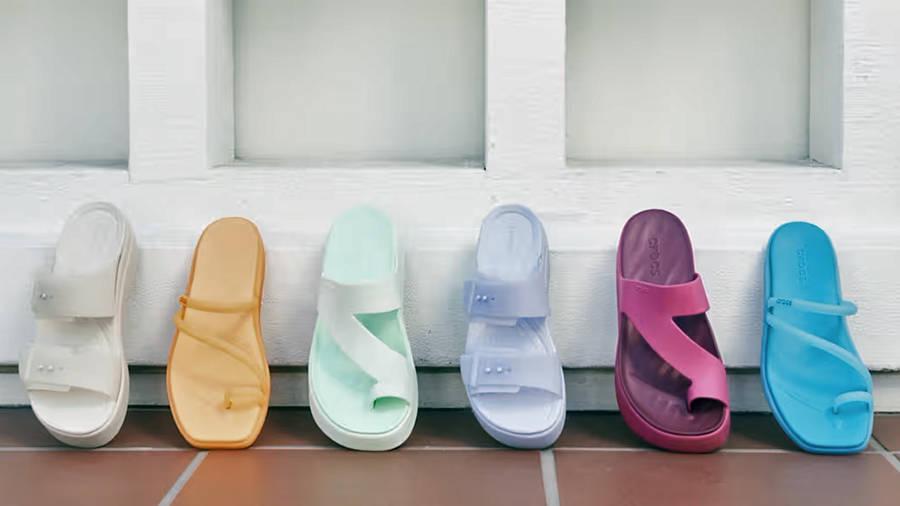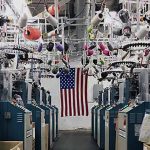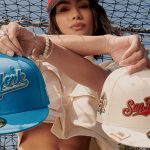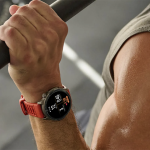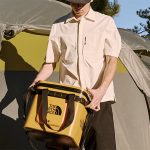Speaking Tuesday, June 3, at the Baird 2025 Global Consumer, Technology & Services Conference, Crocs, Inc. CEO Andrew Rees said the company will emphasize inventory discipline and maintaining margins given the uncertainties created by the trade war.
“As I think about this kind of environment, it’s extremely important for a company like us to control inventory,” said Rees. “If you control inventory, you don’t get forced into making trade-offs that are undesirable for the long-term success of the brand.”
Rees noted that Crocs has long prioritized inventory management, with turns regularly running more than four times, but it is more important given the challenging climate. He added, “I would rather miss a sales opportunity than have excess inventory in this kind of environment and be able to ensure that we maintain high margins and we can continue to invest for future growth.”
Crocs, in early May, reported earnings and sales that topped Wall Street estimates but withdrew its full-year guidance, citing a murky global trade environment and rising consumer uncertainty, making it difficult to forecast demand.
Asked to further elaborate on how Crocs is navigating the current environment, Rees said the company is “very cautiously” planning its U.S. business. “We believe the consumer is already acting cautiously,” he said, noting that casual footwear sales were down in the U.S. by mid-single-digits in the first quarter.
“That’s not typical, right?” said Rees. “The footwear market has been a very resilient and robust market over a 20-plus years period of time.”
He noted that footwear brands are starting to pass on price increases in various ways, including outright price increases or reductions in discounts. He suspects consumers are going to “probably be incrementally more cautious as they start to experience more increases in price.”
He reiterated the value of avoiding inventory surplus. “If you plan higher sales and buy the inventory to achieve those sales and then don’t make those sales, you just get backed up in inventory and you end up liquidating that inventory. I’d rather be on the opposite mode, which is short on inventory and chasing it and elevating price,” said Rees.
Internationally, Rees said many markets, particularly Europe, are “doing really well that are not affected particularly by some of what’s going on here in the U.S. So, in those markets, we are leaning into as much as we can.”
On the cost side, Crocs is focusing on managing SG&A expenses and, in early May, outlined a program to drive $50 million in cost savings. Rees said the cost savings are coming from three areas: efficiencies extracted from distribution and logistics capabilities, some headcount reductions that the company has completed, and “rationalization of other expenditures,” whether within IT or in arrangements with outside partners. Crocs continues to invest in areas, such as its success on TikTok Shop, that support growth. Said Rees, “I think it was a pretty careful prune of what we’re spending and why we’re spending it.”
Rees said Crocs may also raise prices to offset higher expenses related to tariffs but will follow the larger footwear players in the marketplace. Rees said, “We’re going to be very focused around which products in which markets to try and make sure that we’re careful and strategic.”
Regarding the Crocs brand, Rees acknowledged that the classic clog silhouette is “extremely well penetrated” in the U.S. and no longer expected to show “high growth” in the region. He said, “I think it remains extremely relevant, and we continue to drive innovation into that category with new styles.” He noted that Crocs is bringing back the Croc brand in 2026 after de-emphasizing it in recent years and focusing on the classic clog. Rees said, “We’re bringing that back in a meaningful way across the globe, and, historically, that’s been a huge, huge product for us.”
Internationally, the clog still presents major growth opportunities, particularly in markets such as China, India and Southeast Asia, as well as Germany and France in Europe.
In other categories, the Crocs brand is seeing “really strong performance” within sandals, both in the U.S. and overseas this year.
Jibbitz, its charms business, has historically been around 8 percent of the Crocs brand’s sales with an “extremely high margin. Rees added, “We see the personalization trend continue to be super strong around the globe.”
Rees said HeyDude recently delivered “two very strong quarters,” exceeding internal expectations with gains in average selling prices and DTC growth, both online and at its over 50 predominantly outlet stores. Rees said the outlets are performing “extremely well,” supporting sales growth at healthy margins while also providing a vehicle to clear slow sellers.
Internationally, HeyDude is seeing “strong signs of early success” with some distributors that also sell the Crocs brand.
Rees said U.S. wholesale for HeyDude “still has some work to do.” HeyDude’s team is working closely with wholesale partners to further clean up existing inventory and reposition product. Rees added that Crocs would “also be cautious with the HeyDude brand relative to the uncertain economic environment“ to avoid again facing excess inventory levels.
However, Rees remains “super confident“ about HeyDude, citing consumers’ reactions to the new product and the product’s release for fall and next spring. HeyDude has also made some “meaningful marketing investments already this year“ that will continue in the back half to help elevate demand for the brand.
Said Rees, “Many of our investors are disappointed, but I would emphasize that it is an $800 million-ish brand that’s a top-10 global casual footwear brand. There aren’t many that are that size, and it remains extremely profitable. So, we’re very, very happy, and we see a strong growth trajectory ahead of us.”
Other topics explored by Rees:
- Crocs EXP Collection. The Crocs brand has recently introduced an EXP collection, accessible through its mobile app, aimed at consumers seeking more elevated style and design. Rees said Crocs remains a “very democratic brand“ with prices between $50 to $60 for its basic clog. However, some markets, citing Dubai and key cities in Asia, are “extremely affluent,” with consumers seeking more elevated products and greater innovation. Rees said, “So with the EXP is a line of shoes, we’re going to do two things. We’re going to experiment and look to bring in new product categories where we think Crocs has a license to play in the future. That might be the sneaker category — casual sneakers, not performance sneakers. We also elevate our existing products through additional treatments, materials, etc., to provide more exclusive products. As an example, we also collaborated recently with Swarovski, the crystal company, that took a while to put together. But we had a shoe that sold for $1,200 and sold out within the week. And, then, we had a second-tier shoe that sold for $600 and also sold out and was extremely well received. So, there’s a consumer there for that elevated product, and we want to make sure that we’re serving that consumer.”
- TikTok Shop Success. The Crocs brand is the No.1 seller on TikTok Shop, with HeyDude at No.3. Rees believes Crocs is finding success on TikTok in part because it’s been selling on social platforms in China for several years and has become “very adept in understanding what the benefit of that is and how to do it well and do it successfully.“ He said the sales performance on the TikTok shop has exceeded the expectations of both Crocs and TikTok with “very high margins and high full-price selling.“ He added that TikTok also acts as a marketing tool to support its digital and wholesale channels. Said Rees, “We actually had a meeting two weeks ago with TikTok, and they’re obviously rolling out TikTok Shop, as you would expect, to a whole host of countries across the world, and we will partner with them to be one of their leading brands in that effort. So, we’re very excited about it. We think it’s very meaningful for our consumer, and, we think, we have a competitive advantage.”
- Terrence Riley’s Shift to EVP and Chief Brand Officer. Rees was asked about the move, announced on May 21, of Terrence Reilly, formerly president of HeyDude, to the role of corporate EVP and chief brand officer, including oversight of marketing and communications for the Crocs and HeyDude brands. The company is looking for a new HeyDude president. Rees said that as president of HeyDude, Reilly has “done an outstanding job, and we’re really seeing some clear benefits from his leadership and inspiration within the HeyDude brand.“ However, he stressed that Reilly is foremost a marketer, having overseen marketing for the Crocs brand before temporarily leaving Crocs in 2020 to become president of the Stanley drinkware brand. Rees said Reilly’s new role allows him to oversee marketing functions for both brands. Rees said, “Terrence’s brilliance and secret sauce is marketing. He is connected very closely to consumer culture. In some cases, he’s driving and creating some aspects of consumer culture, and he’s very dynamic and creative. So, we think that’s the highest and best use of Terence relative to our overall company. We’re looking forward to him having an impact over both brands.”
Image courtesy Crocs, Inc.

